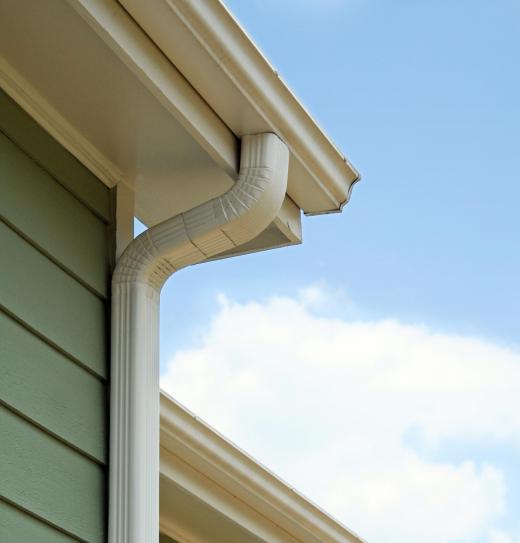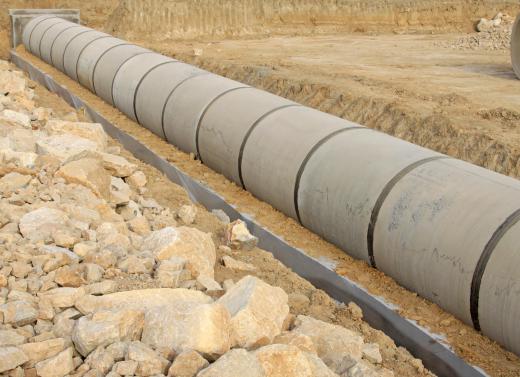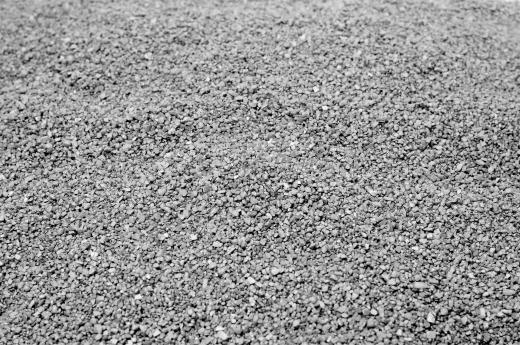Water damage easily can destroy any building, which is why a drainage system usually is needed in almost every kind of structure. Whether the excess water originates in the building or comes from the surrounding landscape, it generally should be drained as soon as possible. Fortunately, there are several types of drainage systems to choose from depending on the circumstances, though they all mostly perform the same task. The most common kinds are the French drain, the downspout drain, and the slope type.
A French drain is one common type of drainage system that most often is found on flat land. It is made up of pipes that surround the structure and direct underground water away from both the foundation and any nearby landscaping. In most cases, it is necessary to dig several large, somewhat shallow holes to install this type of drainage system. Each drainage trench then needs to be filled with gravel. Some people can install this kind of drainage system on their own, mostly by renting the right equipment, but many landscaping companies offer this service.

Another kind of drainage system is a downspout drain which connects to the gutter system of a building and carries water away from the roof toward the ground. Downspout pipes can be rectangular or round, and mostly are made of aluminum, copper, or steel. The most common downspout pipes on houses are rectangular and white, though they often can be replaced to match the exterior décor of a home. No matter what color or shape they are, they should divert rain water not only toward the ground, but away from the foundation of a structure, as well.

Similar to the other types of drainage systems, the main job of a slope drain is to direct water away from a building and its landscaping. The primary method is to allow the water to follow a natural route down a slope. Typically, a pipe is installed and anchored to the small incline on which it sits. The pipe can be made out of metal, concrete, or plastic, and often is covered with a grate to prevent small animals or children from entering the area.

It usually is quite clear when there is a drainage issue. If there is no obvious flooding, the mildew smell that accompanies standing water usually gives it away, even if water is not visible. A slow leak also could cause an eventual issue, weakening the structure over time. The loss of structural integrity in a building, a strong mildew smell, mold, damage to the landscaping, and mosquitoes could be consequences of water damage when no proper drainage system is in place.

